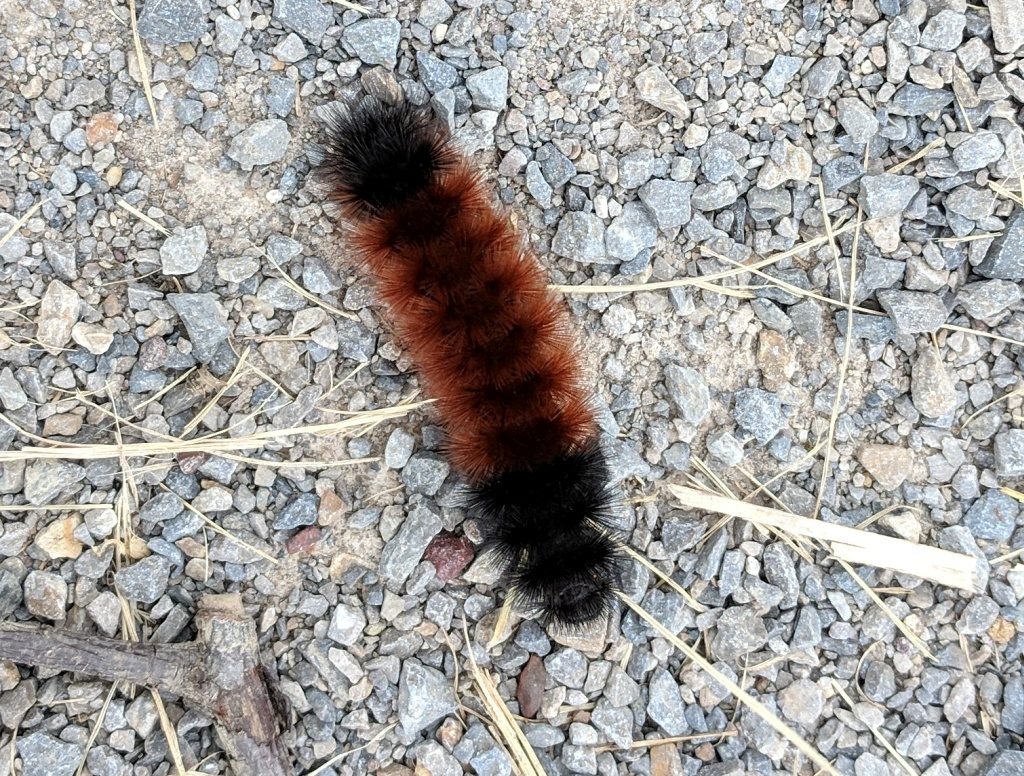
6 October 2023
In October we see woolly bear caterpillars (Pyrrharctia isabella) out in the open, crossing the trails. Because they overwinter as caterpillars, they’re busy looking for the perfect place to spend the winter in leaf litter, under bark or beneath a fallen log.
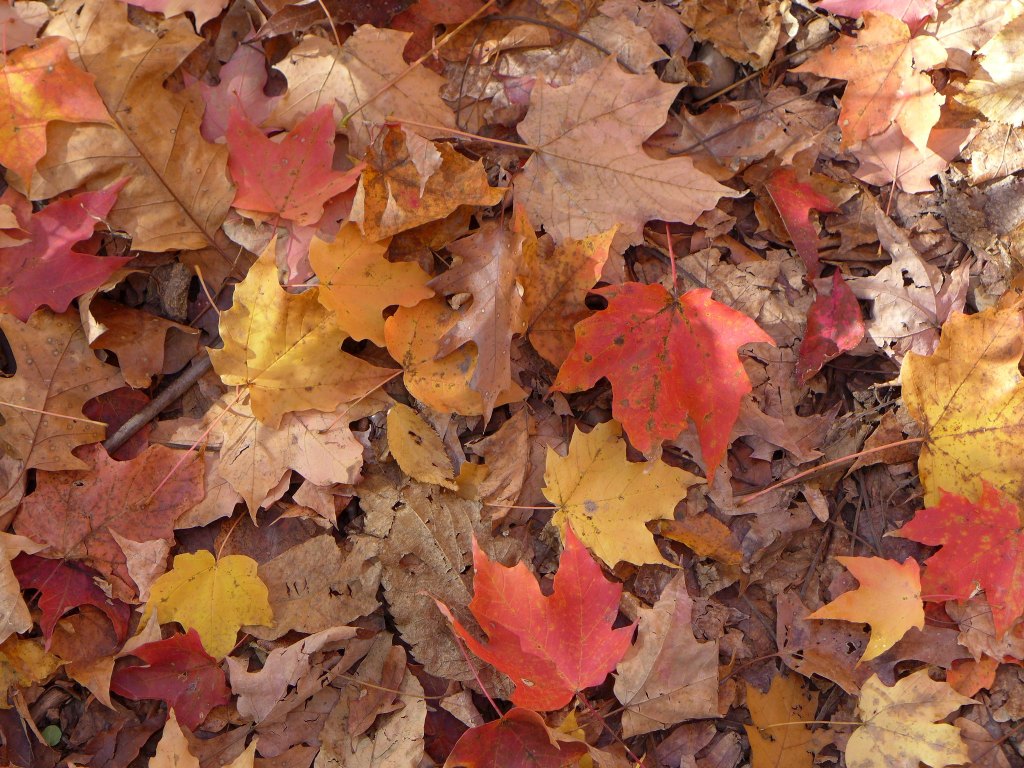
Leaf litter is key winter habitat for a lot of insects including springtails, millipedes, earthworms, butterflies and moths.
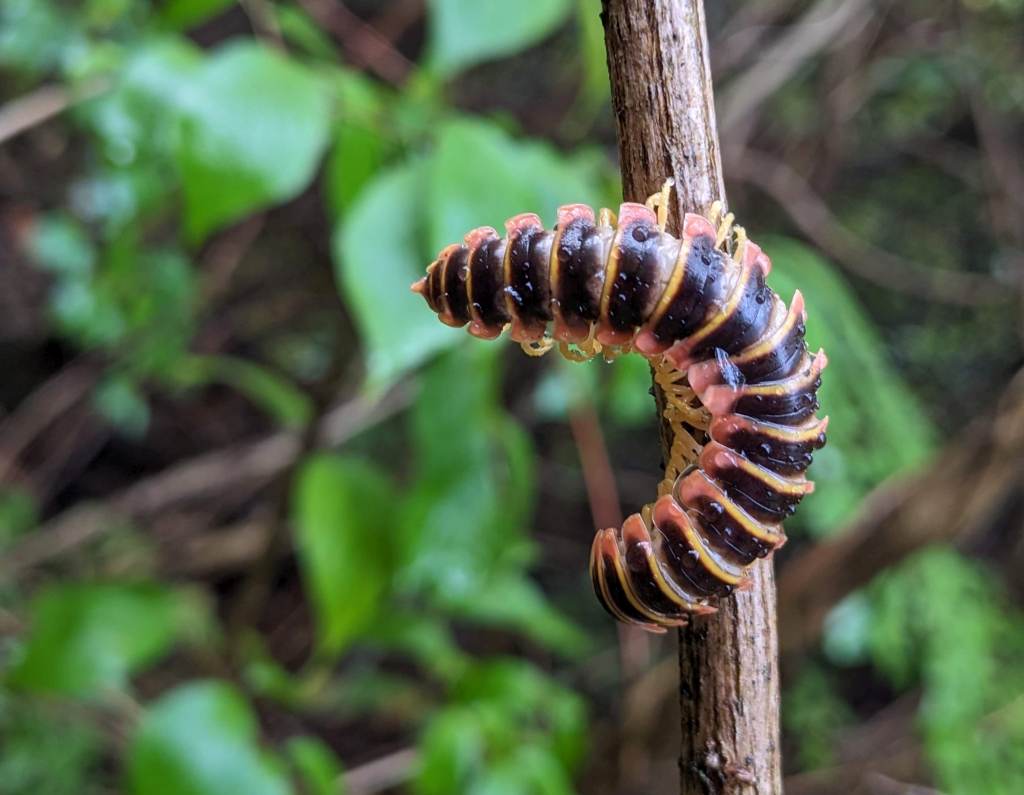
It also shelters salamanders and newts …
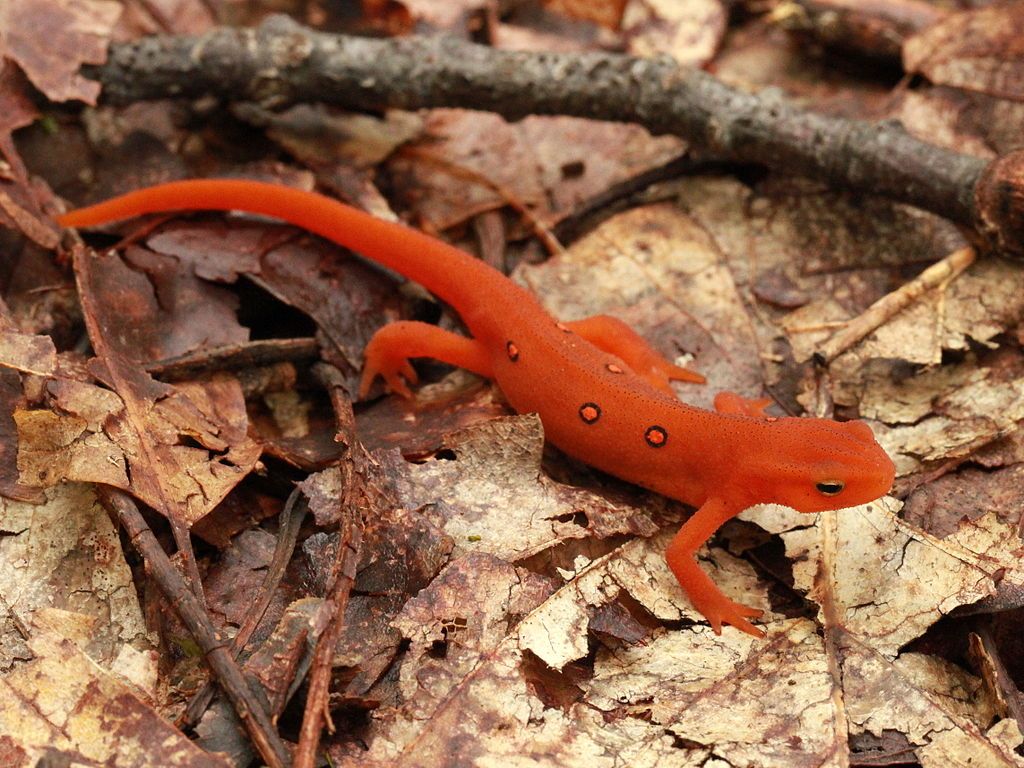
… and provides an insect hunting ground for birds including eastern towhees, dark-eyed juncos, robins and mockingbirds.
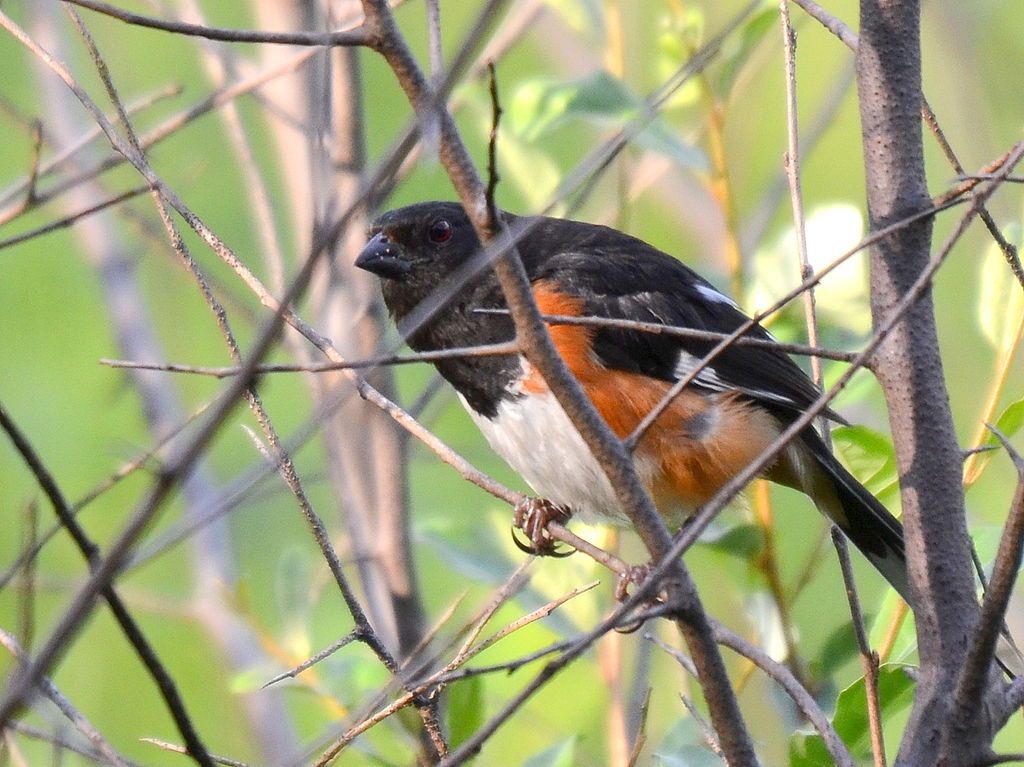
If you’ve been thinking about “wilding” your yard — even just a little bit — now is a great time to start. Leave the leaves. You don’t have to leave it messy. Here’s advice on what to do.
Leaving the leaves and other plant debris doesn’t have to mean sacrificing your yard to the wilderness. The leaves don’t need to be left exactly where they fall. You can rake them into garden beds, around tree bases, or into other designated areas. Too many leaves can kill grass, but in soil they can suppress weeds, retain moisture, and boost nutrition.
Avoid shredding leaves with a mower. Raking or blowing are alternatives that will keep leaves whole for the best cover and protect the insects and eggs already living there.
If you decide you need to clean up the leaves and debris in spring, make sure you wait until late in the season so as not to destroy all the life you’ve worked to protect.
— Xerxes Society: Leave the Leaves: Winter Habitat Protection
Take a break this weekend. Don’t bag those leaves! Just push them aside for wildlife. 🙂
(photos by Kate St. John and from Wikimedia Commons)
(*) p.s. The millipede was easy to photograph because it was dead, probably the victim of a parasitic fungus that prompts the millipede to climb high on a twig before it dies. I wrote down the name of the fungus when I took the picture but cannot read my writing. Perhaps it’s Anthrophaga myriapodia.